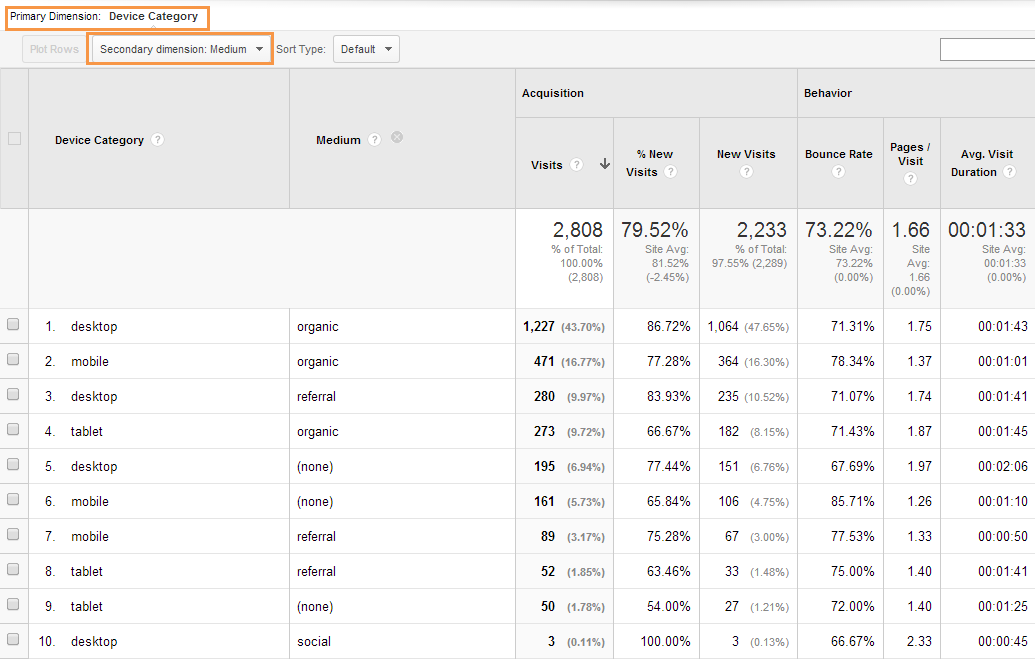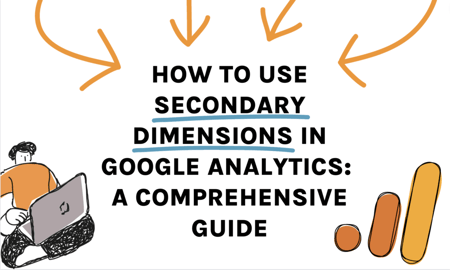8 Simple Techniques For What Is A Secondary Dimension In Google Analytics
Wiki Article
Rumored Buzz on What Is A Secondary Dimension In Google Analytics
Table of ContentsWhat Is A Secondary Dimension In Google Analytics - QuestionsWhat Is A Secondary Dimension In Google Analytics Fundamentals Explained7 Simple Techniques For What Is A Secondary Dimension In Google AnalyticsSome Known Details About What Is A Secondary Dimension In Google Analytics
If this does not sound clear, below are some instances: A purchase happens on a web site. Its dimensions can be (but are not restricted to): Deal ID Coupon code Latest website traffic resource, etc. A customer visit to a site, and we send out the event login to Google Analytics. That occasion's custom-made dimensions may be: Login technique User ID, and so on.Despite the fact that there are many measurements in Google Analytics, they can not cover all the possible scenarios. Therefore personalized measurements are required. Things like Web page URL are global as well as use to many situations, yet what happens if your business offers online training courses (like I do)? In Google Analytics, you will not discover any kind of dimensions relevant specifically to on-line courses.
9%+ of organizations using GA have nothing to do with programs. Which's why anything related particularly to on-line courses ought to be set up by hand. Get In Customized Dimensions. In this post, I will certainly not dive deeper right into custom dimensions in Universal Analytics. If you intend to do so, review this overview.

The range defines to which occasions the measurement will apply. In Universal Analytics, there were four extents: User-scoped custom-made dimensions are used to all the hits of an individual (hit is an event, pageview, and so on). For instance, if you send Customer ID as a personalized dimension, it will be used to all the hits of that particular session and also to all the future hits sent out by that user (as long as the GA cookie remains the exact same).
The Greatest Guide To What Is A Secondary Dimension In Google Analytics
For instance, you can send out the session ID custom dimension, as well as even if you send it with the last event of the session, all the previous events (of the exact same session) will certainly obtain the worth (What Is A Secondary Dimension In Google Analytics). This is carried out in the backend of Google Analytics. measurement uses just to that specific event/hit (with which the measurement was sent)
That measurement will certainly be applied only to the "trial started" event. Product-scoped custom measurement uses just to a specific item (that is tracked with Improved Ecommerce performance). Even if you send multiple items with the very same purchase, each item might have various values in their product-scoped customized dimensions, e. g.
Why am I telling you this? Because some points have actually altered in Google Analytics 4. In Google Analytics 4, the session range is no more readily available (at the very least in custom-made measurements). Google said they would include session-scope in the future to GA4. If you wish to apply a measurement to all the occasions of a specific session, you should send that measurement with every occasion (that can be done on the code level (gtag) or in GTM).
How What Is A Secondary Dimension In Google Analytics can Save You Time, Stress, and Money.
It can be in a cookie, information layer, or elsewhere. From now on, personalized dimensions are either hit-scoped or user-scoped (previously referred to as Customer Residences). User-scoped personalized dimensions in GA4 work likewise to the user-scoped measurements in Universal Analytics yet with some differences: In Universal Analytics, a user-scoped customized measurement (collection in the center of the user session) was related to EVERY event of the exact same session (also if some occasion took place before the dimension was Read Full Report set).Even though you can send out personalized item information to GA4, presently, there is no chance to see it in reports appropriately. With any luck, this will certainly be transformed in the future. Or am I missing out on something? (allow me recognize). GA4 currently supports item-scoped custom dimensions. At some point in the past, Google said that session-scoped customized dimensions in GA4 would be offered as well.
When it comes to custom measurements, this extent is still not readily available. As well as now, let's relocate to the second component of this post, where I will certainly reveal you exactly how to configure internet custom measurements as well as where to discover them in Google Analytics 4 reports. Initially, allow me start with a general review of the procedure, and after that we'll have a look at an instance.

You can simply send out the occasion name, say, "joined_waiting_list" as well as after click to read more that consist of the criterion "course_name".
Excitement About What Is A Secondary Dimension In Google Analytics
In that situation, you will need to: Register a parameter as a customized definition Start sending custom parameters with the occasions you desire The order DOES NOT matter here. But you should do that basically at the exact same time. If you begin sending the parameter to Google Analytics 4 and also just register it as a personalized measurement, state, one week later, your records will certainly be missing that one week of information (since the registration of a personalized measurement is not retroactive).Whenever a visitor clicks a menu item, I will certainly send an event as well as two added criteria (that I will later on sign up as custom measurements), menu_item_url, as well as menu_item_name.: Menu web link click tracking trigger problems differ on the majority of internet sites (due to different click courses, IDs, etc). Attempt to do your best to use this example.
Go to Google Tag Manager > Activates > New > Just Links. By developing this trigger, we will allow the link-tracking functionality in Google Tag Manager.
Go to your web site and also click any of the menu links. Click the very first Web link, Click occasion and also go to the Variables tab of the preview mode.
Report this wiki page